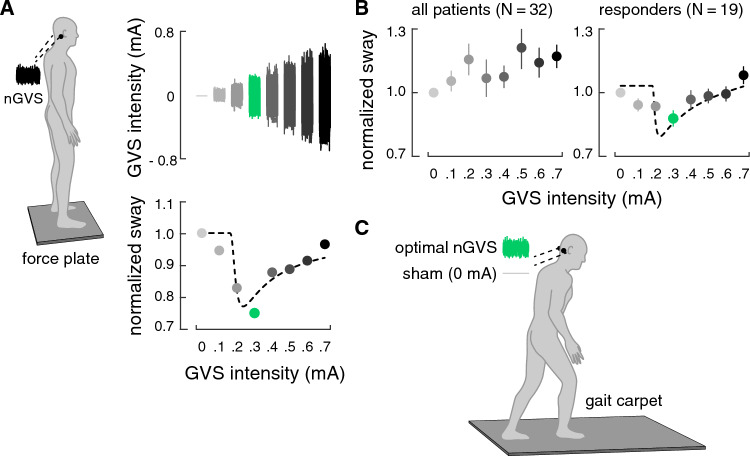Fig. 1.
Experimental setup and procedures. A Effects of noisy galvanic vestibular stimulation (nGVS) on static balance in patients were initially determined on a posturographic force plate (left side). Right side: exemplary modulation of body sway (simulated data, lower panel) across the administered nGVS intensities (upper panel) that follows a bell-shaped performance curve indicative of the presence of stochastic resonance (SR; model fit: dashed line). The green filled dot indicates the optimal reduction of body sway at a particular nGVS level. B Group average nGVS on static balance across all patients (left side). Right side: 19 of in total 32 patients exhibited an SR-like response curve to stimulation with optimal balance improvements at intermediate noise intensities. C Subsequently, the individually optimal nGVS intensity in responding patients and a default intensity of 0.3 in non-responding patients was used to evaluate nGVS effects vs. sham stimulation (nGVS at 0 mA) on walking performance on a pressure-sensitive gait carpet

